Roque Gameiro anya | |
|---|---|
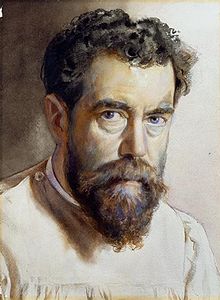 | |
| Born | April 4, 1864 |
| Died | August 5, 1935 |
| Nationality | Portuguese |
Alfredo Roque Gameiro (4 April 1864, Minde - 15 August 1935, Lisbon) was a Portuguese painter and graphic artist.
Roque Gameiro anya | |
|---|---|
 | |
| Born | April 4, 1864 |
| Died | August 5, 1935 |
| Nationality | Portuguese |
Alfredo Roque Gameiro (4 April 1864, Minde - 15 August 1935, Lisbon) was a Portuguese painter and graphic artist.

Alfredo Roque Gameiro was born in Minde, Portugal. When he was ten years old, he went to live in Lisbon with his oldest brother, Justin, who owned a lithography studio. [1] He studied at the "Faculty of Fine Arts" of the University of Lisbon, where José Simões de Almeida was one of his professors. After receiving a scholarship from the Portuguese government, he attended the "Hochschule für Grafik und Buchkunst" in Leipzig and studied lithography with Ludwig Nieper (1826-1906). [1] Upon returning to Portugal in 1886, he became the Director of the "Companhia Nacional Editora" and, in 1894, was appointed a Professor at the "Escola Industrial do Príncipe Real".
He was a frequent contributor to several weekly and monthly periodicals and worked with Manuel de Macedo (1839-1915) to provide illustrations for a deluxe edition of The Lusiads , published in 1900. From 1910 to 1920 he created 10 watercolors and 90 lithographs for what would be his most popular work, Lisboa Velha (Old Lisbon), with an introduction by the poet Afonso Lopes Vieira . He also illustrated several popular novels by Júlio Dinis. In 1919, he became the first Director of the "Escola de Arte Aplicada de Lisboa", a position he held until 1930. The following year, he and his daughter Helena had a successful joint exhibition in Brazil. He was elected a member of the Real Academia de Bellas Artes de San Fernando in 1923.
Three institutions bear his name: the "Escola Roque Gameiro" in Amadora (where he lived for many years), the "Casa Roque Gameiro" (his home, partly designed by Raul Lino; now an exhibition space) and the "Centro de Artes e Ofícios Roque Gameiro" in his hometown, which includes a museum devoted to watercolors. A majority of his works are on display at the municipal museum there, including many on loan from the Gulbenkian Foundation. Some of his designs appear on Portuguese postage stamps. All five of his children became artists: [2]


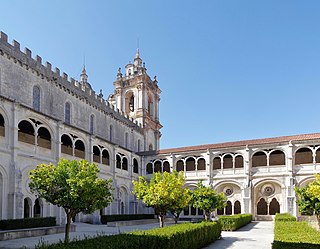
Alcobaça is a Portuguese city and municipality in the Oeste region, in the historical province of Estremadura, and in the Leiria District. The city grew along the valleys of the rivers Alcoa and Baça, from which it derives its name. The municipality population in 2011 was 56,693, in an area of 408.14 square kilometres (157.58 sq mi). The city proper has a population of 15,800 inhabitants.

Leiria is a city and municipality in the Central Region of Portugal. It is the 2nd largest city in that same region, with a municipality population of 128,640 in an area of 565.09 square kilometres (218.18 sq mi). It is the seat of its own district and the Roman Catholic Diocese of Leiria-Fátima. The city is part of the historical province of Beira Litoral.

João Baptista da Silva Leitão de Almeida Garrett, 1st Viscount of Almeida Garrett was a Portuguese poet, orator, playwright, novelist, journalist, politician, and a peer of the realm. A major promoter of theater in Portugal he is considered the greatest figure of Portuguese Romanticism and a true revolutionary and humanist. He proposed the construction of the D. Maria II National Theatre and the creation of the Conservatory of Dramatic Art.
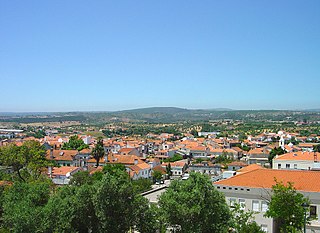
Alcanena is a portuguese town and municipality of Ribatejo in Santarém District. The population in 2011 was 13,868, in an area of 127.33 km².
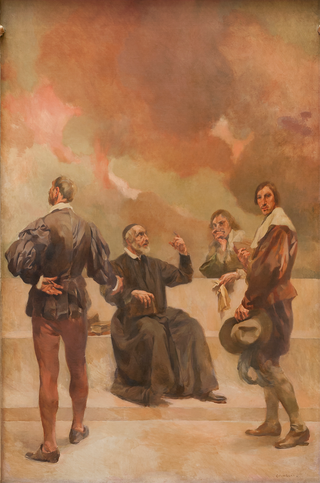
FeboMoniz was a Portuguese nobleman who distinguished himself during the 1580 Portuguese succession crisis.
Luís Teotónio Pereira was a Portuguese politician and diplomat. He was born in Lisbon, Sagrado Coração de Jesus.

Minde is a town and freguesia of Alcanena Municipality, in the District of Santarém, in Portugal. The population of the entire civil parish in 2011 was 3,293, in an area of 21.14 km². Minde is known as the place of origin of the Minderico, a sociolect or argot spoken by traders. The civil parish is located in a landscape of intensive karst. People who originate from or live in Minde are informally known as Minderico (said to have been created as a variation of Mindense because, as a result of the regional development of the clothing industry, the people of Minde were considered to be wealthy. The formal and ever-used form of Minderico is Mindense.
Cidade FM is a Portuguese radio station that focuses on international and national hits. Cidade targets the younger audience, 15-24.
In the Medieval Kingdom of Portugal, the Cortes was an assembly of representatives of the estates of the realm – the nobility, clergy and bourgeoisie. It was called and dismissed by the King of Portugal at will, at a place of his choosing. Cortes which brought all three estates together are sometimes distinguished as Cortes-Gerais, in contrast to smaller assemblies which brought only one or two estates, to negotiate a specific point relevant only to them.

Maria Ana de Sousa Leal da Costa, is a Portuguese sculptor.
The Escola Artística António Arroio is a secondary school in Lisbon, Portugal that specializes in the applied arts.
Jaime Martins Barata was a Portuguese painter and scholar.

The Castle of Avis, is a Portuguese medieval castle in civil parish of Avis, in the municipality of the same name, in the Alentejo district of Portalegre.
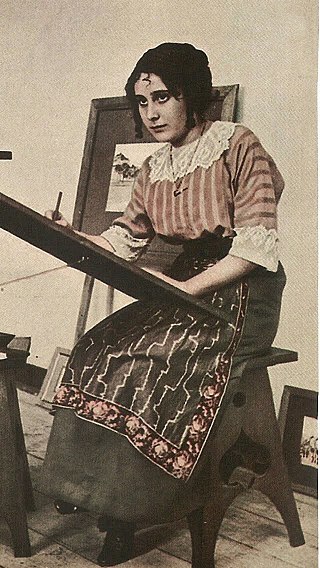
Raquel Roque Gameiro Ottolini (1889–1970) was a prominent Portuguese illustrator and watercolourist. She exhibited her paintings at Lisbon's Sociedade Nacional de Belas-Artes from 1909, receiving the SNBA watercolour medal in 1929. Gameiro illustrated numerous books, newspapers and magazines, including Diário de Notícias and O Século.

Helena Roque Gameiro Leitao de Barros (1895–1986) was a Portuguese watercolourist and painter.
The 2020–21 Taça de Portugal was the 81st edition of the Taça de Portugal, the premier knockout competition in Portuguese football. A total of 165 clubs compete in this edition, including all teams from the top three tiers of the Portuguese football league system – excluding reserve or B teams, which are not eligible – and representatives of the fourth-tier District leagues and cups. The competition began on 26 September 2020 with the first-round matches involving teams from the third and fourth tiers, and concluded on 23 May 2021 with the final at the Estádio Nacional in Oeiras.

Virgínia Dias da Silva ComSE (1850–1922), better known as Actriz Virginia, was a Portuguese stage actress.